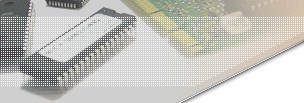



 |
bootix ::: Step by Step to BootManage Remoteboot |
||
 |
 |
||
 |
|||
 |
|||||||||
| |
|||||||||
|
|||||||||
Step by Step to BootManage Remoteboot The bootstrap process on all PCs is a matter of one program starting another, each more intelligent than the one before. The very first program is stored in Read Only Memory in the system BIOS. TCP/IP remoteboot is no different, except that instead of passing control over to very simple boot routines in a known place on a hard disk the PROM on the network card is initialised instead. The PROM contains enough code to contact a server and install a boot image in memory, which is in turn enough to start a full operating system. bootix's engineers have achieved a remarkable feat in packing a fully featured TCP/IP stack into a tiny chip of 16 or 32 Kilobytes. The PROM uses the standard Internet TFTP protocol to talk to a server. A choice of servers is available for all platforms from many different suppliers, ensuring that whatever the requirements are a suitable solution will be found. This translates into savings on network management costs because the PROM fits into any standards-based environment. 1. Plug the PROM into the corresponding socket on the network adapter. This has the effect of enhancing the PC BIOS. When the computer is switched on this code is detected and takes over control of the boot procedure immediately after the Power On Self Test (POST) routines have been run. It is not possible to interrupt this process, so complete security is maintained. For large and complex sites (many of which bootix counts as valued customers) each of these steps has several alternatives. The boot file need not be just a container file, it can be a menu, upgraded PROM software, or any user-specified program. It can even be a menu-selectable PROM image from another manufacturer, such as a Pathworks MOP, Novell RPL or Linux NFS boot. For those extra-special jobs, there is a documented API set for building completely custom solutions. bootix provides the ultimate in flexibility. |